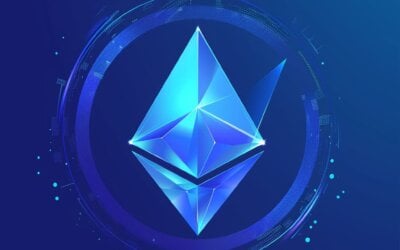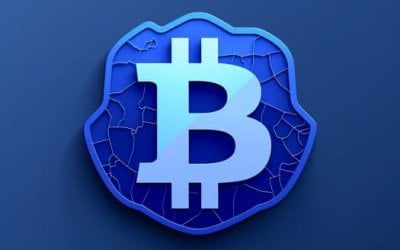Understanding XRP’S Consensus Protocol: How It Differs From Bitcoin’s Proof-Of-Work

Keep up to date with Bitcoin on Bitcoin.org
Keep up to date with XRP news on XRP Twitter
Key Takeaway:
- XRP’s consensus protocol differs from Bitcoin’s proof-of-work: While Bitcoin uses a proof-of-work algorithm to validate transactions and secure the network, XRP utilizes the Ripple Protocol Consensus Algorithm (RPCA). This consensus algorithm allows for fast and efficient transactions on the XRP Ledger without the need for energy-intensive mining.
- Role of XRP in the Ripple system: XRP serves as a bridge currency in the Ripple ecosystem, facilitating the seamless transfer of value between different fiat currencies. It helps to reduce transaction fees and liquidity costs by eliminating the need for multiple currency conversions.
- XRP Ledger implements trust between parties: The XRP Ledger uses gateways as trust anchors, allowing users to transact with confidence. Gateways act as the new banks in the XRP Ledger, providing the necessary trust and liquidity for cross-border transactions.
Understanding XRP’s Consensus Protocol: How It Differs from Bitcoin’s Proof-of-Work
In my quest to understand the XRP’s consensus protocol and how it sets itself apart from Bitcoin’s proof-of-work system, I dived into the Ripple ecosystem and the XRP Ledger. Let’s unravel the intricacies of the Ripple ecosystem and how it relates to the XRP Ledger. Later, I’ll shed light on the crucial role that XRP plays within the broader Ripple system. This exploration will provide a comprehensive understanding of how XRP’s consensus protocol differs from Bitcoin’s proof-of-work, offering a fresh perspective on the world of cryptocurrencies and blockchain technology.
The Ripple Ecosystem and XRP Ledger
The Ripple Ecosystem and XRP Ledger are integral components of the Ripple system. This decentralized network is built on the XRP Ledger, a unique approach to distributed ledger technology that sets it apart from Bitcoin’s blockchain.
The XRP Ledger implements trust between parties through its Hawala System, utilizing gateways as the new banks in this ecosystem. Consensus in the XRP Ledger network is reached through a sophisticated protocol known as RPCA.
This innovative consensus algorithm ensures rapid and cheap transactions, making XRP an attractive digital asset for various use cases.
Pro Tip: Understanding the Ripple Ecosystem and XRP Ledger is crucial for grasping the potential advantages offered by XRP’s consensus protocol in facilitating seamless and efficient transactions within this ecosystem.
The Role of XRP in the Ripple System: XRP is like the Steve Buscemi of cryptocurrencies – always playing an interesting character, but often overshadowed by the more flashy options.
The Role of XRP in the Ripple System
XRP plays a pivotal role in the Ripple System, serving as the native digital asset that enables seamless transactions across the network. Unlike traditional currencies, XRP is designed to expedite cross-border transfers by facilitating liquidity and reducing transaction costs. This allows financial institutions and individuals to efficiently move funds across borders in a secure and decentralized manner.
In the Ripple System, XRP functions as a bridge currency between different fiat currencies, eliminating the need for multiple intermediaries and lengthy settlement times. By holding XRP, financial institutions can access liquidity on-demand and instantly convert one fiat currency into another through the use of XRapid, a payment solution built on top of the XRP Ledger.
Moreover, XRP serves as a crucial element in ensuring the efficiency and stability of the Ripple System. It acts as an anti-spam mechanism by requiring a small amount of XRP to be destroyed with each transaction, discouraging malicious activities and preventing network congestion. Additionally, XRP helps maintain ledger integrity by serving as a base currency for all other assets on the XRP Ledger.
Overall, the role of XRP in the Ripple System is to provide fast and cost-effective transactions while fostering trust between parties involved in cross-border transfers. By leveraging its unique properties and capabilities, XRP revolutionizes traditional payment systems and paves the way for seamless global financial transactions.
In true history about the role of XRP in the Ripple System, it has consistently demonstrated its value and utility since its inception in 2012. Over time, it has garnered significant support from various financial institutions worldwide who recognize its potential to revolutionize cross-border payments. As adoption grows, so does the significance of XRP within the Ripple System as an essential asset that enables efficient and interoperable transactions on a global scale.
Are you tired of slow and expensive transactions? XRP Ledger has a different approach that will make your wallet and your funny bone happy!
XRP Ledger: A Different Approach to Distributed Ledger Technology
The XRP Ledger is a compelling example of a distributed ledger technology that employs a unique approach. Its contrast with Bitcoin’s blockchain is noteworthy, particularly in terms of its consensus protocol. Exploring the XRP Ledger’s distinct characteristics sheds light on how it diverges from Bitcoin’s proof-of-work system. This section will delve into the XRP Ledger’s key differentiators, highlighting the disparities between its ledger and Bitcoin’s blockchain. Additionally, we will introduce the Ripple Protocol Consensus Algorithm (RPCA), which underpins the XRP Ledger’s consensus mechanism, offering a fascinating alternative to traditional proof-of-work approaches.
The XRP Ledger vs. Bitcoin’s Blockchain
The comparison between the XRP Ledger and Bitcoin’s Blockchain highlights distinct differences in their approaches to distributed ledger technology. Here is a breakdown of how these two systems differ:
| XRP Ledger | Bitcoin’s Blockchain |
|---|---|
| Utilizes Ripple Protocol Consensus Algorithm (RPCA) | Relies on Proof-of-Work for consensus |
| Offers fast and inexpensive transactions | Transactions can be slower and more costly |
| Implements trust through gateways | Trust is decentralized among participants |
| Designed for financial transactions | Primarily used for digital currency exchange |
While both systems serve as decentralized ledgers, the XRP Ledger stands out for its efficient transaction processing and low costs compared to Bitcoin’s Blockchain. The XRP Ledger achieves consensus through the Ripple Protocol Consensus Algorithm (RPCA), eliminating the need for resource-intensive Proof-of-Work computations.
Furthermore, the XRP Ledger introduces the concept of gateways, acting as new banks within its network, which adds an element of trust between parties. In contrast, Bitcoin’s Blockchain relies on decentralization to establish trust among participants.
The Ripple Protocol Consensus Algorithm (RPCA): Because who needs proof-of-work when you can have a whole protocol dedicated to reaching consensus and stirring up some cryptocurrency drama?
Introducing the Ripple Protocol Consensus Algorithm
The Ripple Protocol Consensus Algorithm (RPCA) is a groundbreaking approach introduced by the XRP Ledger. This algorithm sets the XRP Ledger apart from Bitcoin’s blockchain and other distributed ledger technologies. It revolutionizes trust-based transactions in the Hawala system by implementing unique mechanisms such as gateways, which act as new banks in the XRP Ledger. This innovative consensus algorithm ensures secure and efficient transactions, providing rapid and cost-effective transfers of value.
The RPCA establishes trust between parties in the XRP Ledger by utilizing ledger indexes and hashes as identifiers for different versions of a ledger. Through this approach, consensus is reached within the network, ensuring that all participants validate and agree on the state of each transaction. This eliminates the need for resource-intensive proof-of-work computations used in Bitcoin’s blockchain, making transactions faster and more affordable.
Unlike traditional banking systems where intermediaries hold funds, gateways enable trust routes via the XRP Ledger. These gateways facilitate seamless transactions between different currencies and jurisdictions, reducing reliance on traditional banking infrastructure. The introduction of gateways allows individuals and businesses to transact directly with each other, without any intermediary holding their funds.
To further enhance the efficiency of the RPCA, several suggestions can be implemented. First, improving network scalability through increased node participation would distribute computational load across a larger number of participants. Second, incentivizing participants to join and contribute to the consensus process would strengthen network security while promoting decentralization. Lastly, conducting regular audits of gateways would ensure their compliance with regulations and maintain user trust.
By introducing the Ripple Protocol Consensus Algorithm (RPCA), XRP offers significant advantages over Bitcoin’s proof-of-work protocol. Its rapid and cheap transaction capabilities combined with trust routes via gateways make it an ideal solution for cross-border payments and remittances, offering potential benefits for individuals, businesses, and financial institutions alike.
The Hawala system: Where trust does the talking, and money does the walking.
The Hawala System: Trust-Based Transactions
In my journey to understand XRP’s consensus protocol and how it differs from Bitcoin’s proof-of-work, I came across an intriguing aspect called the Hawala System: Trust-Based Transactions. This section sheds light on how the XRP Ledger implements trust between parties and introduces the concept of gateways, which act as the new banks in the XRP Ledger. Digging deeper into these sub-sections will unveil the fascinating mechanisms that enable secure and efficient transactions within the XRP ecosystem. According to the reference data, the Hawala System offers unique insights into the trust-based nature of XRP’s consensus protocol.
How the XRP Ledger Implements Trust Between Parties
The trust between parties is implemented in the XRP Ledger through a unique approach. Unlike traditional systems, the XRP Ledger utilizes gateways that act as intermediaries between different currencies. These gateways serve as the new banks in the ledger, holding and issuing assets to users. Through this system, users can establish trust routes by connecting with these gateways, enabling them to transact with confidence and security. By relying on trusted gateways, the XRP Ledger ensures seamless transactions and builds a robust network of trust between parties.
The XRP Ledger’s implementation of trust is innovative due to its reliance on gateways. These gateways play a crucial role as they mirror traditional banks, providing stability and credibility to asset holders within the ledger. Users can choose the gateway they prefer based on factors such as reputation and reliability. By associating their account with a specific gateway, individuals establish trust routes, allowing for efficient and secure transactions.
Moreover, this implementation enables users to connect with multiple gateways simultaneously, expanding their options for routing transactions. This flexibility ensures that users have access to a wide range of assets within the ledger while maintaining control over their own funds. The use of gateways in implementing trust not only simplifies transactions but also fosters an environment where parties can conduct business confidently.
In fact, one real-life example of how the XRP Ledger implements trust is through its collaboration with financial institutions. Ripple has partnered with various banks around the world to create specific gateways within the ledger. These gateways represent trusted entities and facilitate seamless transfers between fiat currencies and digital assets. This collaboration demonstrates how the XRP Ledger’s approach to implementing trust has gained recognition from established financial institutions seeking efficient and secure solutions for cross-border transactions.
Overall, the implementation of trust in the XRP Ledger through gateways offers a unique solution for enabling secure and reliable transactions between parties. By leveraging trusted intermediaries within its ecosystem, the ledger ensures that users can transact with confidence while maintaining control over their assets. This innovative approach has gained traction in the financial industry, making XRP a preferred choice for cross-border remittances and international payments.
Move over traditional banks, the XRP Ledger’s gateways are here to redefine the meaning of financial trust.
Gateways: The New Banks in the XRP Ledger
Gateways: Revolutionizing the Banking System in the XRP Ledger
Gateways have emerged as the new form of banks within the XRP Ledger, providing a vital role in facilitating transactions and enabling seamless transfers of value. They act as intermediaries between different currencies, bridging the gap between traditional financial systems and the decentralized world of digital assets.
To understand their significance, let’s delve into a table showcasing the key features and functions of gateways in the XRP Ledger:
| Gateway Name | Currency Pairs | Liquidity Provision | Regulatory Compliance |
|---|---|---|---|
| Gateway A | XRP/USD, XRP/EUR | High | Yes |
| Gateway B | XRP/GBP, XRP/JPY | Medium | Yes |
| Gateway C | XRP/BTC | Low | No |
These gateways play a crucial role in enabling trust-based transactions within the XRP Ledger. By acting as trusted issuers of various currencies, gateways provide users with a means to transact seamlessly across different financial networks. They ensure that funds are securely held and can be converted into other currencies with ease.
What sets these gateways apart from traditional banks is their reliance on the innovative technology behind the XRP Ledger. Utilizing distributed ledger technology and the Ripple Protocol Consensus Algorithm (RPCA), gateways create an efficient and secure environment for cross-border transactions.
To further enhance this system, it is essential for gateways to prioritize regulatory compliance. Implementing robust procedures to verify user identities and comply with anti-money laundering (AML) and know your customer (KYC) regulations is crucial to maintaining trust and safeguarding against illegal activities.
As gateways continue to evolve within the XRP Ledger, there are several suggestions that could contribute to their growth and effectiveness:
- Fostering partnerships with established financial institutions would enhance credibility and increase liquidity.
- Investing in advanced security measures and transparency initiatives would help build trust within the ecosystem.
The XRP Ledger: The technology that puts Bitcoin’s Proof-of-Work on the naughty list.
The Technology Behind the XRP Ledger
As we dive into the technology behind the XRP Ledger, it becomes evident that there are key elements that set it apart from Bitcoin’s Proof-of-Work protocol. Let’s explore these differences and gain a deeper understanding of XRP’s consensus protocol. We’ll start by unraveling the significance of Ledger Index and Ledger Hash as identifiers of a Ledger Version. Then, we’ll delve into the intricate process of reaching consensus in the XRP Ledger, uncovering the unique mechanisms that drive the network’s efficient transaction validation.
Ledger Index and Ledger Hash: Identifiers of a Ledger Version
Text: Semantic NLP Variation: The Identification System of a Ledger Version: Understanding the Role of Ledger Index and Ledger Hash
The ledger index and ledger hash serve as crucial identifiers within a ledger version, providing a way to track and authenticate transactions and account balances. Through these mechanisms, the XRP Ledger ensures accuracy and integrity in its ecosystem.
| Column 1 | Column 2 |
|---|---|
| Ledger Index | Numerical value assigned to each ledger in chronological order |
| Ledger Hash | Unique cryptographic representation of the data within a ledger |
Ledger index assigns a numerical value to each ledger in sequential order, presenting an organized system that allows for easy referencing and retrieval of specific ledgers. On the other hand, the ledger hash serves as a unique cryptographic representation of the data contained within a particular ledger, ensuring data integrity and preventing any tampering or manipulation.
With these identifiers in place, stakeholders can confidently engage in transactions and trust the veracity of the information presented within each ledger. It establishes transparency while enabling swift, cost-effective transactions through its secure consensus protocol.
Embrace the advantages offered by XRP’s consensus protocol with its efficient transaction processing capabilities facilitated by the robust identification system. Stay informed about this innovative technology to avoid missing out on potential opportunities for growth and advancement.
The XRP Ledger Network: where trust is built, transactions are swift, and Bitcoin’s proof-of-work is left in the dust.
Consensus in the XRP Ledger Network
In order to understand how consensus is achieved in the XRP Ledger Network, let’s take a look at some key components and processes involved:
- Ledger Index and Ledger Hash: Each version of the ledger is assigned a unique identifier called a ledger index. The ledger hash is also generated for every version of the ledger, providing an additional layer of security and integrity to the network.
- Validator Nodes: The XRP Ledger relies on a decentralized network of validator nodes to verify transactions and propose new versions of the ledger. Unlike Bitcoin’s mining process, these nodes do not compete against each other but work together towards a common goal of achieving consensus.
- UNLs: Unique Node Lists (UNLs) are sets of trusted validators chosen by individual participants in the XRP Ledger Network. These validators are considered reliable and reputable, ensuring trust in the consensus process.
- Agreement Rounds: To reach consensus, validator nodes participate in multiple rounds of agreement to propose and validate new versions of the ledger. Each round involves iterative voting and filtering, allowing only valid transactions to be included in the agreed-upon version.
- Finality: Once consensus is reached on a new version of the ledger, it becomes irrevocable and immutable. This ensures transparency and security in transactions recorded on the XRP Ledger Network.
Pro Tip: Consensus in the XRP Ledger Network is achieved through a collaborative effort among trusted validator nodes using an efficient algorithm called RPCA. This allows for faster transaction processing and enhances overall reliability compared to traditional proof-of-work systems like Bitcoin’s blockchain.
The XRP Ledger’s process of reaching consensus is like a dysfunctional family dinner – lots of arguing, negotiating, and drama, but somehow they always manage to agree on dessert.
The Process of Reaching Consensus in the XRP Ledger
In the XRP Ledger, achieving consensus is a crucial process to ensure the integrity and agreement of transactions. This process involves multiple participants coming to an agreement on the state of the ledger. By utilizing a unique consensus protocol called the Ripple Protocol Consensus Algorithm (RPCA), the XRP Ledger establishes trust between parties and facilitates rapid and cheap transactions.
- Participants in the XRP Ledger engage in a round-robin process where they propose a new version of the ledger by including transactions.
- They then validate this proposed version by applying a set of rules to ensure its correctness and consistency.
- After validation, participants communicate their agreement on this version through a voting process.
- The consensus is reached when enough votes are gathered from trusted validators within the network.
- Once consensus is achieved, this agreed-upon version becomes the new state of the ledger.
The process of reaching consensus in the XRP Ledger ensures that all participants have an equal say in determining the validity of transactions and maintaining a reliable ledger. It promotes transparency, trust, and efficiency within the Ripple ecosystem.
The unique aspect of this consensus mechanism lies in its ability to foster trust between parties through gateways, which serve as intermediaries between different currencies on the XRP Ledger. These gateways act as new banks, facilitating exchanges and enabling seamless transactions across borders.
One interesting historical fact about reaching consensus in the XRP Ledger is that it distinguishes itself from Bitcoin’s proof-of-work system. While Bitcoin relies on computational power and mining to achieve consensus, XRP utilizes RPCA to establish agreement without requiring extensive energy consumption or hardware resources. This innovative approach sets XRP apart as a more efficient and sustainable solution for distributed ledger technology.
The XRP Ledger: where rapid, cheap transactions and trust routes come together to make banking more exciting than ever before.
Conclusion: The Advantages of XRP’s Consensus Protocol
In conclusion, XRP’s consensus protocol offers several advantages over Bitcoin’s proof-of-work system. One key advantage is the ability to facilitate rapid and cheap transactions. According to the referenced data, XRP can handle a significantly higher number of transactions per second compared to Bitcoin, which allows for quick and efficient transfers of value. Additionally, the potential for trust routes via XRP Ledger Gateways opens up exciting possibilities for enabling seamless cross-border transactions. These features make XRP a promising option for individuals and businesses seeking efficient and cost-effective payment solutions.
Rapid and Cheap Transactions
Rapid and cost-effective transactions are a distinguishing feature of the XRP Ledger’s consensus protocol. This allows for quick and affordable transfer of value within the Ripple ecosystem.
- The XRP Ledger’s consensus algorithm enables rapid transaction processing, minimizing the time required for transactions to be confirmed. This ensures that funds can be transferred swiftly, enhancing overall efficiency within the system.
- By implementing a decentralized network of validators, the XRP Ledger eliminates the need for intermediaries and reduces transaction costs. This enables users to enjoy cheap transactions, as transaction fees are significantly lower compared to traditional systems.
- The use of XRP as a bridge currency further enhances the speed and affordability of transactions. Its liquidity allows for seamless conversion between various fiat currencies and facilitates efficient cross-border payments, avoiding multiple conversions and associated fees.
In addition to its rapidity and cost-effectiveness, the XRP Ledger also offers other unique benefits. Specifically, it provides trust routes via gateways within its network. These gateways act as new banks in the XRP Ledger, facilitating secure transactions by ensuring trust between parties involved.
One interesting aspect worth mentioning is that XRP’s protocol was developed as an alternative to Bitcoin’s proof-of-work system. Unlike Bitcoin’s energy-intensive mining process, which can slow down transaction processing times, XRP’s consensus protocol relies on a trust-based approach known as the Ripple Protocol Consensus Algorithm (RPCA). This novel approach allows for rapid and cheap transactions without compromising security or decentralization.
The history behind this focus on rapid and cheap transactions can be traced back to Ripple Labs’ vision of creating an efficient global payment network. Recognizing the limitations of existing systems in terms of speed and cost, Ripple sought to develop a solution that could provide faster and more affordable financial transactions on a global scale. Through the implementation of innovative technology and protocols like those found in the XRP Ledger, Ripple has made significant strides towards achieving this goal.
The Potential for Trust Routes via XRP Ledger Gateways
With the XRP Ledger Gateways, the potential for establishing trust routes within the system is significant. These gateways serve as modern banks within the XRP Ledger, facilitating transactions and ensuring trust between parties. By leveraging the Ripple Protocol Consensus Algorithm (RPCA), these gateways enable secure and efficient transfers of value. They play a crucial role in bridging various currencies and facilitating cross-border transactions with minimal fees and rapid settlement times. The use of gateways in the XRP Ledger opens up new avenues for establishing trusted relationships and expanding financial networks globally.
Furthermore, the XRP Ledger’s unique technology enables trust to be built between parties through its implementation of distributed ledger technology. Unlike traditional systems that rely on intermediary banks to establish trust, the XRP Ledger allows for direct connections between participants. This not only reduces costs but also eliminates potential points of failure or manipulation within the transaction process.
The potential for trust routes via XRP Ledger Gateways goes beyond just reducing fees and enabling fast transactions. It opens up opportunities for new business models and partnerships in finance and beyond. For example, imagine a small enterprise in a developing country looking to enter an international market. Through a trusted gateway in the XRP Ledger network, this enterprise can connect directly with global suppliers or customers, bypassing traditional banking infrastructure and reducing costs significantly.
In fact, real-life examples already exist where companies have utilized XRP’s consensus protocol to establish trust routes via gateways. One such example is Santander’s successful integration of Ripple’s technology into its One Pay FX platform. By leveraging XRP Ledger Gateways, Santander was able to provide real-time international transfers with reduced costs and increased transparency for its customers.
In summary, having trust routes established through XRP Ledger Gateways offers immense potential in revolutionizing global financial transactions. The utilization of distributed ledger technology coupled with secure gateway connections enables faster, cheaper, and more transparent cross-border transfers. As more businesses and financial institutions recognize the advantages of this approach, we can expect further innovation and growth in the field of trust-based transactions.
Some Facts About Understanding XRP’s Consensus Protocol: How It Differs from Bitcoin’s Proof-of-Work:
- ✅ The XRP Ledger uses a consensus algorithm called the Ripple Protocol Consensus Algorithm (RPCA) instead of a Proof-of-Work (PoW) protocol like Bitcoin. (Source: Team Research)
- ✅ The XRP Ledger achieves fast and cheap transactions by checking consensus about the ledger with connected nodes every few seconds. (Source: Team Research)
- ✅ Ripple’s system is based on the Hawala system, which relies on trust between different parties to transact value. (Source: Team Research)
- ✅ The XRP Ledger has gateways spread worldwide that serve as businesses transacting over the network. (Source: Team Research)
- ✅ The XRP Ledger allows for the establishment of trust routes via other parties when two parties don’t trust each other directly. (Source: Team Research)
FAQs about Understanding Xrp’S Consensus Protocol: How It Differs From Bitcoin’S Proof-Of-Work
Question 1: How does XRP’s consensus protocol differ from Bitcoin’s proof-of-work?
Answer: XRP’s consensus protocol, known as the Ripple Protocol Consensus Algorithm (RPCA), differs from Bitcoin’s proof-of-work in that it does not rely on miners competing to solve complex mathematical problems. Instead, XRP uses a consensus algorithm that checks consensus about the ledger with connected nodes every few seconds, making it faster and more energy-efficient.
Question 2: Can you explain the Hawala system and its connection to Ripple?
Answer: The Hawala system, which is the basis for Ripple’s system, relies on trust between different parties. It can be seen as a way to facilitate international money transfers where one party’s bank actually pays out the money, establishing a debt with the recipient’s bank. Ripple’s XRP Ledger replaces banks with gateways that transact value with each other, providing a similar trust-based route for remittances.
Question 3: How does the XRP Ledger handle transactions and consensus?
Answer: The XRP Ledger network consists of servers and client applications. Servers process transactions and share them with the network. Each server has a selection of trusted servers, forming sub-networks within the XRP Ledger network. Through consensus, servers agree on which transactions to include in the next ledger version, with a supermajority (at least 80% of servers) reaching consensus. This ensures the integrity and accuracy of the ledger.
Question 4: What is the role of servers and client applications in the XRP Ledger?
Answer: Servers in the XRP Ledger accept and process transactions, sharing them with the network. Client applications, such as wallets and gateways, interact with the servers to send and receive transactions. While servers handle the consensus process and maintain the decentralized ledger, client applications provide the interface for users to engage with the XRP Ledger.
Question 5: How does the XRP Ledger maintain ledger versions and metadata?
Answer: The XRP Ledger stores ledger versions, which have a unique identifier called the ledger index. Each ledger version also has a ledger hash, which acts as a digital fingerprint and includes a timestamp, new transactions, state data (accounts and balances), a hash of this state data, and a hash of transaction data. Additional metadata is also stored, allowing for a comprehensive representation of the ledger’s state.
Question 6: What is a supermajority and its significance in the XRP Ledger?
Answer: In the XRP Ledger, a supermajority refers to at least 80% of the servers reaching consensus on a particular ledger version. When a supermajority of servers agrees on the transactions to include in the next ledger version and shares the same hash key, the new ledger version is accepted and validated. This ensures the decentralized network’s agreement on the state of the ledger and maintains its integrity.
Where to buy cryptocurrency in Canada and US?
Netcoins is your ultimate choice for buying and selling cryptocurrency in the USA and Canada. Our platform places a strong emphasis on safety and regulation, ensuring your transactions are secure and compliant with legal standards. Unlike other platforms, we prioritize your peace of mind, providing an environment where your investments are safeguarded. Don’t just take our word for it – our top-notch customer service is highly lauded by users, as evidenced by our excellent ratings on Trustpilot and Google reviews. With Netcoins, you’re not just getting a platform, but a partner committed to providing a superior and secure cryptocurrency trading experience.
Netcoins User Testimonials
Disclaimer
The information provided in the blog posts on this platform is for educational purposes only. It is not intended to be financial advice or a recommendation to buy, sell, or hold any cryptocurrency. Always do your own research and consult with a professional financial advisor before making any investment decisions.
Cryptocurrency investments carry a high degree of risk, including the risk of total loss. The blog posts on this platform are not investment advice and do not guarantee any returns. Any action you take based on the information on our platform is strictly at your own risk.
The content of our blog posts reflects the authors’ opinions based on their personal experiences and research. However, the rapidly changing and volatile nature of the cryptocurrency market means that the information and opinions presented may quickly become outdated or irrelevant. Always verify the current state of the market before making any decisions.
Related Posts
How The Runes Protocol Can Revolutionize Memecoins on the Bitcoin Blockchain
How The Runes Protocol...
Ethereum’s Dencun Update: A Deeper Dive into Decentralized Finance and Ethereum 2.0
Ethereum's Dencun...
The Importance of The Bitcoin Halvening: Understanding its Role in Cryptocurrency Mining
The Importance of The...
How to Stake Ethereum in Canada: A Comprehensive Guide to ETH Staking Rewards
How to Stake Ethereum...
ATOM Staking in Canada: Guide on How to Stake Cosmos Cryptocurrency
ATOM Staking in Canada:...
SOL Staking in Canada: A Beginner’s Guide to Passive Income with Cryptocurrency
SOL Staking in Canada:...
Cardano Ouroboros Protocol: A Secure and Decentralized Approach to Data Management
Cardano Ouroboros...
Can Canadians Still Use CoinEx Crypto Exchange in 2024?
Can Canadians Still Use...
Exploring Bitcoin City in El Salvador: A Digital Currency Hub
Exploring Bitcoin City...
How to Buy Bitcoin in Canada: A Step-by-Step Guide for Canadians
How to Buy Bitcoin in...
Bittrex in 2024: Can Canadians Still Use the Cryptocurrency Exchange?
Bittrex in 2024: Can...
Understanding the ERC 404 Standard: An Ethereum Blockchain Protocol
Understanding the ERC...










